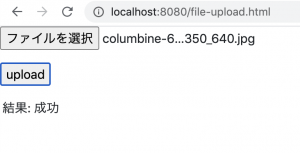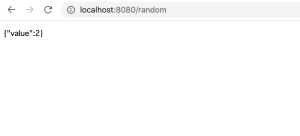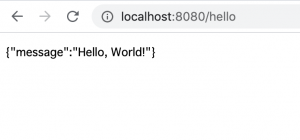@Controller
画面遷移用のコントローラーに付与
@RestController
リクエストを受け付けるコントローラークラス
@RequestMapping(“path”)
マッピングするURLの接頭辞を設定
@GetMapping(“path”)
GETメソッドを受け取るメソッド
@PostMapping(“path”)
POSTメソッドを受け取る為のメソッドに付与
@Service
サービスクラス
@ComponentScan
特定のアノテーションが付与されたクラスのBeanをDIに登録
@Bean
DIコンテナに管理させたいBeanを生成するメソッドに付与
@Data
コンパイル時に、setter, getter, toString, equals, hashCodeなどのメソッド生成
@Autowired
特定のアノテーションを付与したクラスのインスタンスを使用できるようにする
@ModelAttribute
返り値は自動的にmodelに追加
@Validated
Bean Validationアノテーションが評価され、結果がBindingResultに格納
@PathVariable
Rest形式のパラメータを受け取る
@RequestParam
リクエストパラメータを受け取る
@Entity
JPAエンティティ
@Table(name=”table name”)
エンティティに対応するテーブル名を指定
@GeneratedValue
auto increment
@GeneratedValue(strategy = GenerationType.SEQUENCE, generator=”シーケンス名”)
SEQ_IDで自動採番
@Transactional
クラス内に付与するとDBのトランザクション制御
@AllArgsConstructor
全フィールドを引数にもつコンストラクタ生成
@NoArgsConstructor
引数がないコンストラクタ
@Column
カラムに名前や制約を設定
@Query(“JPQL”)
データへのアクセスを自作する際に使用
@NotNull, @NotEmpty, @NotBlank, @Size(min=,max), @Email, @AssertTrue, @AssertFalse, @Pattern, @DateTimeFormat
@SpringBootApplication
Spring Bootの様々な設定を自動的に有効にする
@EnableAutoConfiguration
Spring Bootの様々な設定を自動的に有効にする
@Configuration
JavaConfig用のクラスであることを示す
@Qualifier(“Bean name”)
同じ型のBeanがDIコンテナに複数登録されている場合に適用する
アノテーションをきちんと理解しないと、SpringBootは使いこなせんな。








